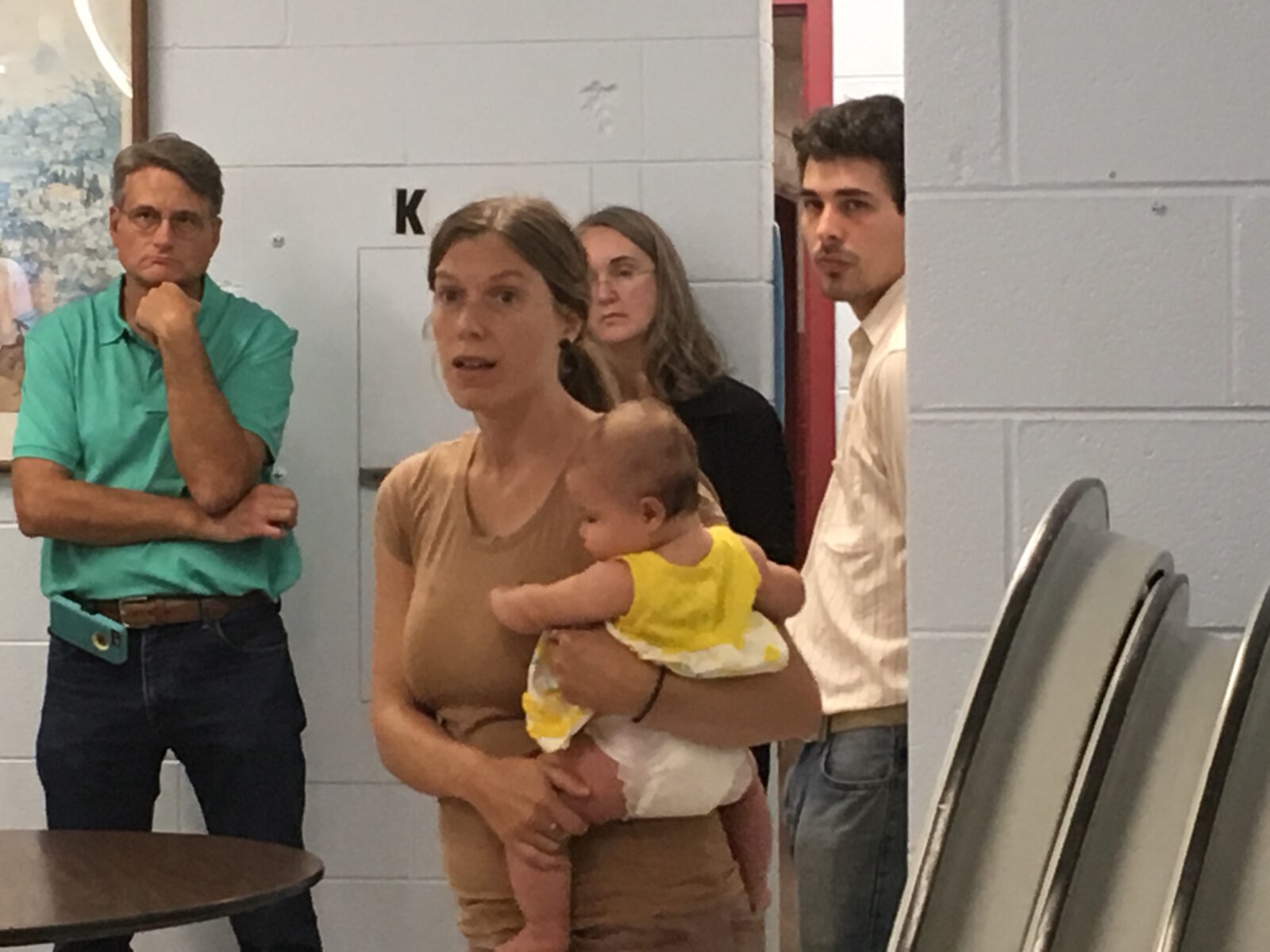South Knoxvillians turned out in a trickle to discuss the future of a 95-year-old industrial site in Vestal that hasn’t been used in more than two decades. But the few who attended the public forum at the South Knoxville Community Center Monday night were keenly interested and ultimately vocal about their concerns and preferences.
The cleaned-up toxic site at 1508 Maryville Pike was utilized by fertilizer companies from the 1920s to the 1960s. In 1979, it was purchased by Smokey Mountain Smelters, which smelted metal to recover aluminum. Those operations ceased in 1994, and the property was abandoned.
The Environmental Protection Agency began investigating the site in 1997, and in 2010 it was placed on the EPA’s National Priorities list and recommended for Superfund cleanup. The main phase of cleanup was completed in 2011.

Maryville College assistant professor of sociology Andrew Gunnoe and student research assistant Anna Peterson listen to comments at a forum focused on the former Smokey Mountain Smelters site.
Andrew Gunnoe, an assistant professor of sociology at Maryville College, and Anna Peterson, an undergraduate research assistant, are working with the EPA and the Tennessee Department of Environment and Conservation to find out what the public – Vestal and South Knoxville residents in particular – would like to see happen to the site.
Some at the meeting thought the forum may have been premature. The property’s last owner is deceased, and taxes are long overdue. The site’s fate will depend on its ownership, which at this point is a big question mark.
This was the first of two planned forums to solicit input. Since the meeting time conflicted with County Commission’s regular meeting, no county officials attended. However, commission hopeful R. Larry Smith and the two candidates for City Council’s District 1 seat, Rebecca Parr and Stephanie Welch, were present. SoKno’s neighborhoods were represented by residents and business operators from Vestal, Colonial Village, Lake Forest, Lindbergh Forest and South Haven.
Peterson said the EPA is in the final stages of remediation of the site, and the toxic substances have been removed or capped. Use of the 13-acre site, which lies between two railroad lines and borders Montgomery Village, will be limited because of the containment measures taken. For example, no residential development that required digging would be possible.
Smith opined that the site’s proximity to rail lines would make it attractive to the Knoxville Chamber, which promotes Knoxville’s potential to a variety of industrial companies. Community members seemed open to the idea – as long as it provided job and training possibilities for residents, especially those at Montgomery Village, a KCDC-operated apartment complex.
Patterson noted that other brownfield sites had been transformed into Suttree Landing Park and additional South Waterfront development as well as the new home of Holston Gases in North Knoxville.
SoKno residents wanted to know if there could be public uses for the land in addition to parks or ball fields. Parr, who has been working with the Montgomery Village Tenants Association on developing programs that promote lifestyle improvements, wondered if part of the site could be used for that. Classes and training programs received murmurs of approval.
Chelsea Voelker, a Vestal resident who’s involved in sustainable agriculture, suggested that the land could be used for a market site. Vestal has been singled out as a food desert, and access to fresh produce would be a plus for the area.
Gunnoe said, not surprisingly, that the process of transforming the site would take years. He said they plan to hold the next forum in late October.

